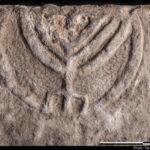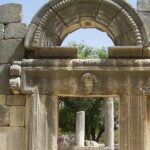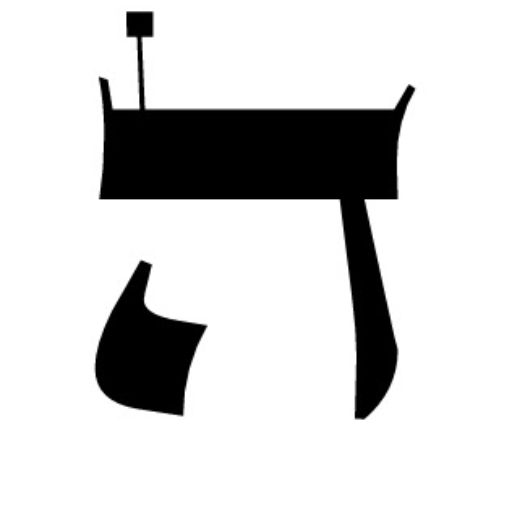In previous posts, I have argued that (i) not only is it impossible to arbitrate disagreements about what constitutes the perfect version of Nusah Eretz Yisrael, there is no need to attempt to do so, since each congregation can make use of modern digital tools and printing facilities to create ‘good enough’ texts for specific days that can be shared and modified by others, and (ii) that the priority for improving communal prayer is neither finding the ideal combination of words nor per se making the nusah shorter, but to revive practices of communal prayer that more readily lend themselves to creating to spiritual edification and dignified service of G-d.
So, without further ado, click here to gain access to fully copy-and-pastable siddur that runs from Minha Erev Shabbos, to Maariv Motzaei Shabbos. I made it for the first siyyum of the revived Triennial Cycle, which we celebrated here in Katzrin a little over two weeks ago. I invite readers to adapt it as they wish, adding, substracting or modifying according to your preferences and needs. Please just remember to first make a copy of the Google Doc and edit your own version. And please make that available for others to consult as well.
By way of explanation
To belabour the point, there’s no one correct version of Nusah Eretz Yisrael, any more than there is a one correct version of Nusah Bavel, but there are better and worse, more and less appropriate, and more and less coherent ways of doing it. The ability to agree to disagree on liturgical questions is an important first step towards making progress, but it does not absolve those who prefer this or that form from the responsibility to justify their choices. To the contrary, once the pretence of a Platonic Nusah Eretz Yisrael is abandoned, it then becomes necessary to make explicit the rationale behind different liturgical decisions. And, when it’s clear where everyone is coming from, it’s possible to work cooperatively towards separate, but not incompatible ends.
In making this Siddur, I drew chiefly on two sources, the 2nd/3rd edition of Siddur Nusah Eretz Yisrael by Rav Yair Shaki של’ט”א and Nusah Ashkenaz. My use of the latter was partly a time-saving measure, since I could copy and paste from Sefaria instead of typing it out, but the chief consideration was ease of use. Apart from celebrating finishing hamisha humshei Torah, a goal of the the Shabbos was to trial out certain forms of participatory and/or ceremonial forms of prayer from Jewish history. Executing this so it doesn’t fall flat on its face presents a challenge and that challenge is easier the less the nusah itself presents a stumbling block to those unfamiliar with it. In particular, communal singing, especially with a relatively small group is made immeasurably easier by familiarity. My general approach, therefore, was to use specifically Eretz Yisrael forms only where I thought it unlikely to undermine the general goal of a well-ordered and dignified service. I would have been impossible for me to make this booklet without access to the Siddur Nusah Eretz Yisrael, and if you haven’t bought a copy already, I recommend you do. If you haven’t, buy a spare or the bentcher. Now for some specifics.
שמונה עשרי
The amidah for Minha Erev Shabbos is a formula I have constructed for myself over many years, using the Nusah Eretz Yisrael Siddur as a base and adding phrases from other nushaot that particularly appealed to me. Where relevant, I use hatimot from the Yerushalmi where these differ from those found in the Genizah, e.g. רופא חולים rather than רופא חולי עמו ישראל, with the exception of אלהי דויד ובונה ירושלים, which I take to be a partial compromise with the prevalent Bavli practice of separating the b’rachot. The Motzaei Shabbos amidah I modified by adding in an additional selection of usages collected from different Nusha’ot, which I took from a PDF of the very useful סידור עזרת השבטים by haRav Noam Kaplan. My goal here was mostly to demonstrate the benefits of varying the nusah of the personal amidah for concentration and edification.
קבלת שבת
This is taken almost word for word from the Siddur Nusah Eretz Yisrael siddur. During the lockdowns, I took the opportunity to do this with my sons every week and always enjoyed it. Having the Shivata made it even better.
פסוקי דזמרא
My principal goal here was to try out a relatively minimalist form of responsive recitation. To make that possible time-wise, I included only the chapters that essentially universal across all nushaot. I used the shortest versions of Nishmat for which there is reasonable textual support, understanding it to be essentially a long concluding bracha, as indicated in B Pesahim 118a. I avoided repetition of chapters of tehilim over the course of Shabbat, based on the girsa in B Brachot 4b that requires only saying Psalm 145 once.
קריאת שמע
Here, I followed Nusah Ashkenaz, only replacing the special piyyut for Shabbat with the version from Siddur Nusah Eretz Yisrael, because I like it better, and changing the final hatimah. I broke with strict originalism by having אל אדון sung together on the grounds that it’s nice and people like it. I’m happy to say that פריסת שמע went very well.
תפלת שבעה
Here I made only tentative moves towards my eventual goal of reviving the authentic Eretz Yisrael tradition of creative liturgical poetry, mostly because I have an awful lot of reading still to do. I took a small first step by making a clear division between the individual’s short amidah and a more developed and poetic version recited by the Shatz. This was made easy for me by the using the variant versions already included in the Siddur Nusah Eretz Yisrael, with poetic introductions to the bracha of kedushat hayom from the Siddurim of Amram Gaon and Sa’adya Gaon. I also included a line to add to the first bracha that appears the siddur of Rav Amram Gaon, but is mentioned by Pirkoi ben Baboi as an Eretz Yisrael addition. For Kedusha I just used Nusah Ashkenaz on the grounds that until I am sure what exactly I want to do, it’s best to stick with what people know.
קריאת התורה
Everything here is Nusah Ashkenaz, minus בריך שמיה (which as the real deal guys will tell you, isn’t supposed to be in Nusah Ashkenaz either). The prayer for the state is my own creation. I think I should probably try to make it a bit shorter.
קדיש
This is probably the element that elicited the most comment. My original choice was to have every Kaddish in Aramaic. I accept that Kaddish was originally in Hebrew, but it is also true that only fragments of this Hebrew Kaddish are recoverable from sources that allude to them and every text we have is in Aramaic. The Hebrew Kaddish is a translation and inevitably sounds like it. It is an open question how similar it is to the authentic Kaddish (the Hebrew sort-of-Kaddish included in some siddurim during Kriat haTorah is certainly very different). I therefore think that the benefits of having a text familiar to everyone, and one that is attached to known tunes and cadences, outweigh the benefits of authenticity.
However, others argued with me that the Aramaic presents a stumbling block to concentration. Either people are simply unable to understand it, or the switch to a relatively unfamiliar language causes them to tune out. Others simply prefer the praying exclusively in Hebrew. So I practiced what I preached and compromised on having Hebrew Kaddish for Aravit. I was pleasantly surprised with how well it went.



[…] we used here in Katzrin for Shaharit on the last day of חנוכה תשפ”ד. As with the previous siddur, the goal is to illustrate the theory of using open source liturgy to revive better forms of Jewish […]